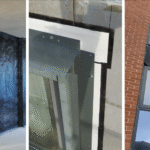As the population ages, the need for compassionate and well-structured elderly care has never been more critical. Across the UK, families are increasingly prioritising environments that promote both emotional and physical wellbeing for their loved ones. The focus has shifted from simply providing medical support to cultivating holistic environments that foster community, engagement, and dignity.
The Importance of Holistic Care
True elderly wellbeing extends far beyond clinical needs. Holistic care emphasises mental stimulation, social connection, and personalised attention. When seniors feel valued and included, their health outcomes improve dramatically. Research consistently shows that isolation contributes to declining health among older adults, while regular interaction and meaningful activities enhance longevity and mood stability.
Modern care environments are now embracing this model by integrating recreational spaces, community events, and personalised therapy programs. Family involvement is also encouraged to ensure residents maintain meaningful ties with loved ones — a factor proven to bolster emotional health.
Designing for Dignity and Comfort
Architecture and design play an equally important role in elderly wellbeing. Facilities that blend warmth, accessibility, and familiarity create spaces that feel like home rather than institutions. Natural light, outdoor access, and private spaces for reflection or family visits can have a profound impact on residents’ emotional comfort.
Incorporating adaptable features such as grab rails, wide corridors, and sensory-friendly interiors ensures safety without compromising aesthetics. Many leading homes now use technology to assist daily living — from smart fall detection systems to personalised activity tracking — making independence both achievable and safe.
Community and Connection
Community integration is a cornerstone of modern elderly care. Partnerships with local organisations, schools, and volunteer groups allow residents to remain part of society. Activities such as intergenerational programs, community gardening, and local art initiatives help residents maintain a sense of identity and purpose.
Moreover, local engagement enhances the facility’s reputation and trust within the wider community. Families are increasingly seeking care providers who value connection and transparency — not just clinical excellence.
Quality of Care in Practice
Among the growing examples of excellence in elderly care, one local facility stands out for its dedication to personalised support — the Ross on Wye care home has adopted a person-centred model that focuses on emotional and social wellbeing alongside medical attention. By combining compassionate staff training, inclusive community programs, and state-of-the-art safety measures, it exemplifies how modern care homes can balance professionalism with humanity.
Staff Development and Emotional Intelligence
Behind every great care home is a team that understands empathy as deeply as they understand medicine. Continuous staff development ensures caregivers can provide not just physical assistance but emotional reassurance. Training in emotional intelligence, communication, and dementia awareness helps maintain a nurturing environment for all residents.
Furthermore, creating a culture where staff feel valued and supported reduces turnover — a major challenge in the care industry — and ensures continuity of care for residents who rely on consistent, familiar faces.
The Future of Elderly Care
The care sector continues to evolve rapidly. Technology is becoming more personalised, sustainability is influencing design choices, and data-driven insights are helping providers anticipate residents’ needs more accurately. The goal for the future is not just to extend life but to enhance its quality — creating homes where independence, joy, and connection flourish side by side.
Families seeking care for their loved ones should look beyond amenities to assess values: does the home encourage community engagement? Are staff empowered to show compassion as well as competence? Is the physical environment conducive to comfort and safety? These questions will increasingly define the quality of elderly care in the years to come.
Conclusion
A supportive care environment is not merely a facility — it’s a living community built around dignity, empathy, and engagement. As standards rise and expectations evolve, care homes that embrace holistic wellbeing will continue to lead the way, setting new benchmarks for how society treats its elderly population.

